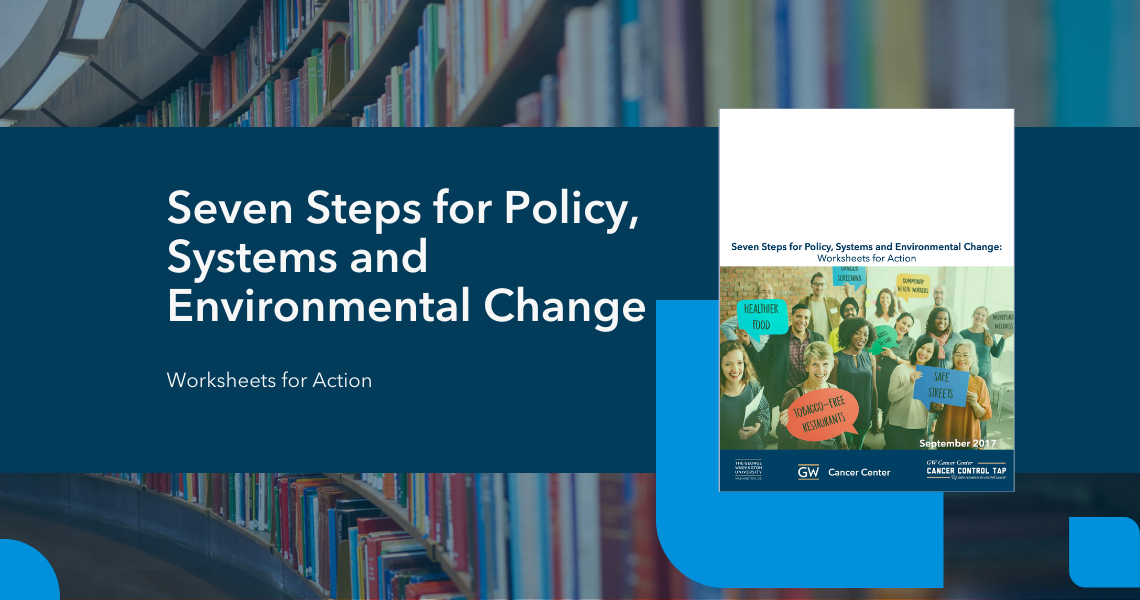Seven Steps for Policy, Systems and Environmental Change: Worksheets for Action is a companion to both Action4PSEChange.org and the accompanying Action for PSE Change: A Training, to assist comprehensive cancer control professionals in planning, designing, implementing and evaluating PSE change initiatives. Each is organized around the seven steps of the PSE change process.
Please note that these materials are currently being updated for purposes of 508 compliance. If you need an accommodation to assist in your use of the materials in the interim, please complete the Accessibility Feedback Form.
View Seven Steps for Policy, Systems and Environmental Change: Worksheets for Action (PDF)
Following are worksheets addressing each of the seven steps of the PSE change process:
Step 1: Engage – Build partnerships and engage the community
PSE change initiatives involve a wide variety of people, agencies and organizations from all corners of the community, working toward a common goal. As with other public health initiatives, partnerships are vital to any PSE change process.
View the Step 1 Worksheet (PDF)
Step 2: Scan – Perform environmental scans
An environmental scan can help determine what actions should be taken within the broad health issue you want to address. The environmental scan allows you to identify gaps, trends and factors affecting the political, social, economic and legal contexts to help you understand the drivers of PSE change.
View the Step 2 Worksheet (PDF)
Step 3: Assess – Identify priority areas
After you have scanned the external environment surrounding the health issue you want to address, you now understand the drivers and challenges of your potential PSE change initiative. Assess and review available data to determine which specific aspect of the health issue can be potentially resolved or lessened through PSE change.
View the Step 3 Worksheet (PDF)
Step 4: Review – Assess feasibility of interventions
Once you have developed SMART goals and objectives, review the feasibility of your proposed PSE change intervention to determine if your goals and objectives can be implemented. Work with stakeholders to develop a strategy for turning an idea, goal or objective into action, including a discussion of the political climate and readiness.
View the Step 4 Worksheet (PDF)
Step 5: Promote – Promote awareness, communicate and educate
You are ready to communicate the need for your PSE change effort. Communicate to all stakeholders the need for PSE change prior to implementation to help lessen potential resistance.
View the Step 5 Worksheet (PDF)
Step 6: Implement – Take action
The first five steps of the PSE change process lead to the implementation of your PSE change intervention. Carry out PSE change activities that link directly with goals and objectives in your cancer control plan.
View the Step 6 Worksheet (PDF)
Step 7: Evaluate – Measure your success
Evaluate the processes employed during the implementation of your PSE change intervention, as well as the short-term, intermediate and long-term outcomes expected to result from the intervention.
View the Step 7 Worksheet (PDF)
